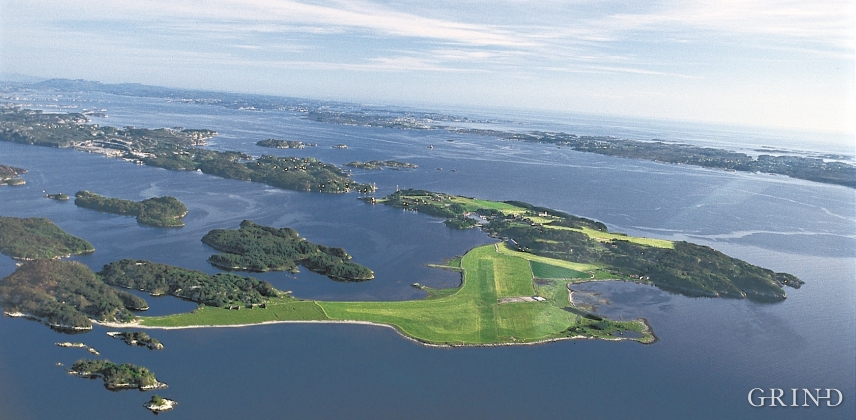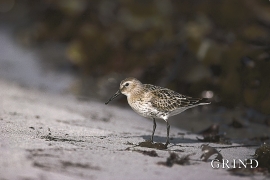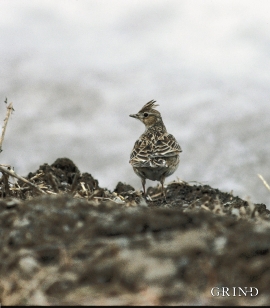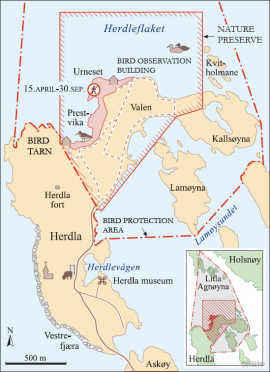Published: 28.10.2004 | Author: Stein Byrkjeland
A CENTRAL AIRPORT FOR MIGRATING BIRDS
Bergen folk landed on it, long and well. The Germans took it over, during the Second World War. The birds had been doing it for several thousands of years: HERDLA is the main airport for migrating birds during their autumn migrations.
If you try to see Herdla from a bird's perspective, you will understand why: Herdla is a flat, green, attractive oasis between the west coast's rocky moors, fjords and mountains. For a tired migrant, who still has many hundreds of miles to go, it is not just tempting to take a closer look at this place. It is in fact entirely necessary, for there is very little of this type of natural haven in this part of western Norway. For several bird species, Herdla is in fact the only place between Vigra and Sunnmøre and the beaches of Jæren in Rogaland where they can hope to secure an essential meal.
Many of the migrating birds have to travel far away to find suitable conditions when winter approaches. Flying demands much energy. A duck uses five times as many calories for each unit of time she flies, as compared with wandering by foot around land. Birds surely get tired when they fly far, and it is very important that they don't run out of fuel. Before the long migrations start, most of them go on a "fat cure". They stock up on their fat reserves as this is their way of "filling up with fuel". If this supply runs out, there will be a crisis, if they don't find a haven for an emergency landing within reach.
For such tired and hungry birds on their autumn migrations, Herdla has an important function. It is fully possible to "top up" their tanks, but then one must have ample access to the right kind of food. They shall preferably eat most possible in the least possible amount of time, such that they can be on their way again as soon as the wind and weather allow. The soil, beaches and the shallow sea areas around Herdla are biologically highly productive. If one studies wading birds at low tide in Prestevika or in a pond on Valen, you tend to see hectic activity as they search for food.
The richest bird area in Hordaland
Herdla is the richest bird locality in Hordaland. It is fully possible different bird species have been documented here, and some of these are rare. You are welcome to come and watch the birds. You can see them best from the walking path around Herdlavalen or from the two bird observatories.
The Skylark is a common nesting bird on Valen. In fact, this is one of very few places in Hordaland that you can find this species in the summer time. Herdla is also the only place in the county where you can count on seeing the Shelduck. Annually, one or two pairs nest on Herdla.
It is the wading birds on their autumn migrations that give Herdla its greatest distinctiveness. The most common are plovers or ruffs, often in mixed flocks. Small wading birds, such as dunlins, little stints and ringed plovers are periodically numerous in the tidal zone at low tide, or in ponds on Valen. Larger species, like the Lapland Bunting, Grey Plover and Common Greenshank are not numerous, but are consistently observed. The wader migration lasts from late in July until out in October, but most birds are usually seen in the beginning of September.
Nature preserve and protected bird area
The management of the nature preserve on Herdla is a compromise between many conflicting interests. The most important bird area on Herdla was protected as a nature preserve in 1985, after having been provisionally protected since 1980. This preserve is 1.3 km² in size. In addition, one finds a 3.2 km²-sized bird preservation area, that stretches from the reservation's boundary in the south all the way across Herdlaflaket. You are free to use Herdla for walks and recreation, as long as you remember that you must do so on the birds' premisses.
- Amundsen, T. 1985. Fuglefaunaen på Herdla. 389 s. Virkesdal, E. 2002. Herdla – den spesielle øya. Herdla museum/Askøy kommune.






